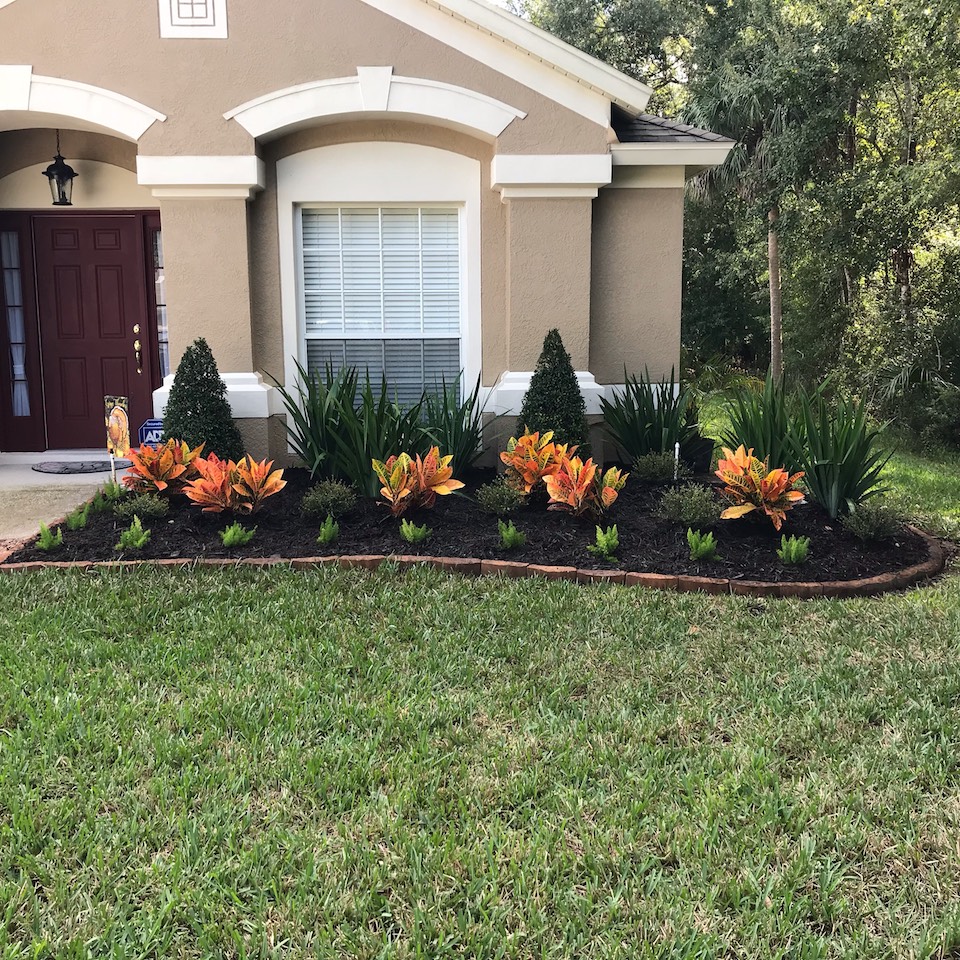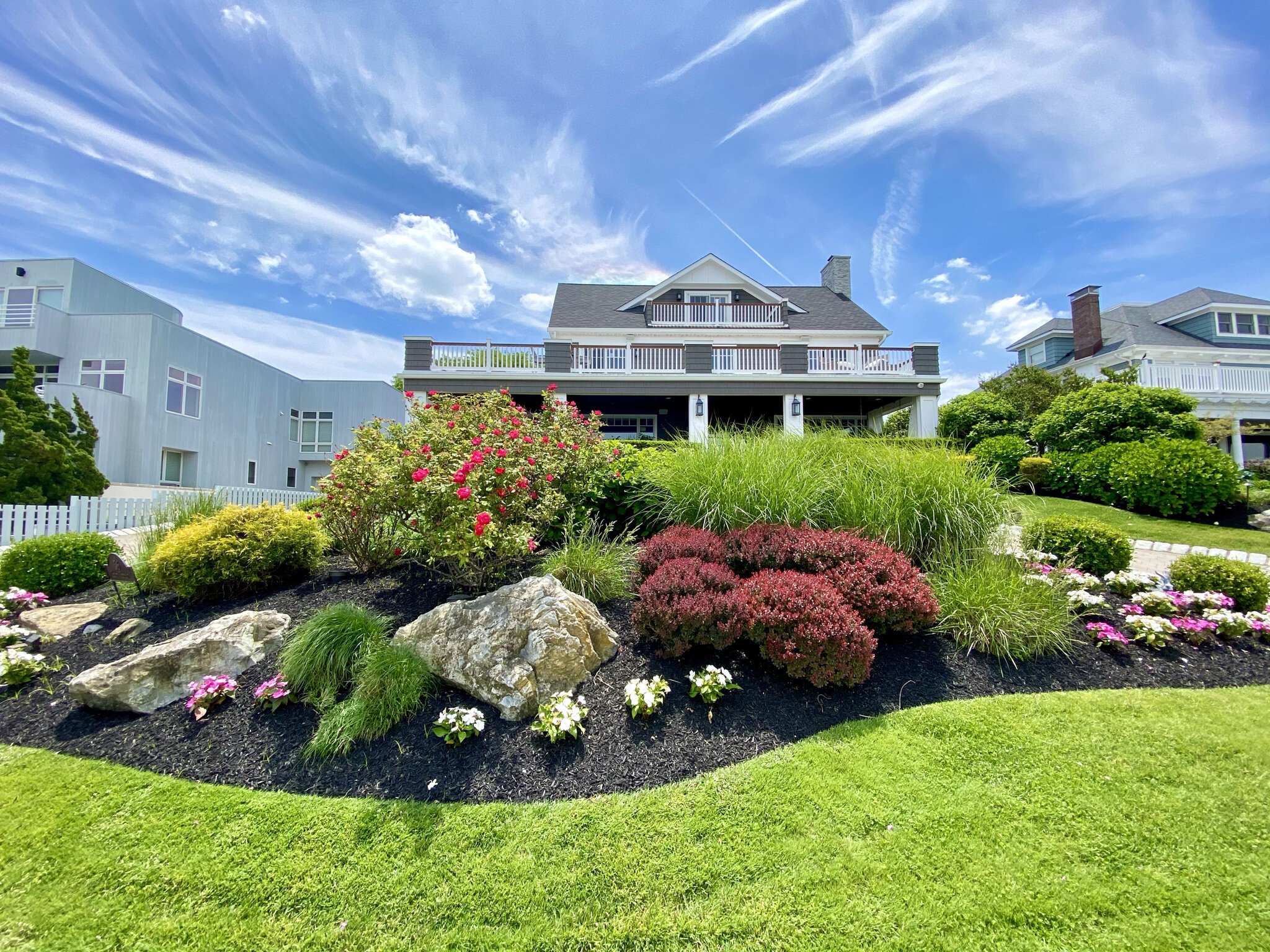Achieve Stunning Outcomes with Ingenious Palm Desert Landscaping Designs
Achieve Stunning Outcomes with Ingenious Palm Desert Landscaping Designs
Blog Article
A Comprehensive Guide to Creating and Implementing Effective Landscape Design Solutions
The art and science of landscaping expand past mere appearances; they include a thoughtful integration of style principles, environmental stewardship, and functional execution. What methods can one use to guarantee these landscapes not only flourish yet likewise flourish in consistency with their surroundings?

Comprehending Landscape Layout Concepts
One could question what foundational elements add to efficient landscape layout. At its core, successful landscape style rests on several vital concepts that direct the setup and choice of aspects within a space. These principles include unity, balance, rhythm, and percentage, each serving to develop an unified exterior atmosphere.
Unity describes the natural connection among various parts, making sure that they collaborate visually and functionally. Balance can be attained via unbalanced or in proportion plans, enabling the landscape to really feel stable and inviting. Percentage entails understanding the range of components in relation to each various other and the surrounding atmosphere, advertising visual consistency and convenience.

Examining Your Outdoor Room
Before implementing the concepts of landscape style, a detailed evaluation of your outside area is crucial. This first evaluation assists specify the scope of your landscape design project and makes sure that your style lines up with the distinct features of your property. Begin by assessing the dimensions of your space, taking exact dimensions to recognize the readily available area for various elements such as patios, pathways, and gardens.
Following, observe the existing functions of your landscape, including topography, dirt top quality, and drain patterns. These variables dramatically affect plant choice and positioning. In addition, examine the sunlight exposure throughout different locations throughout the day, as this will influence the types of plants that prosper in your yard.
Consider the microclimates created by structures, trees, and various other barriers, as they can impact temperature level and moisture degrees. Take note of any existing plants or hardscape components that you wish to get rid of or retain. This comprehensive evaluation prepares for a efficient and knowledgeable landscape design option, making sure that your style is not only visually pleasing but sustainable and likewise useful for years to come.
Lasting Landscaping Strategies
Integrating sustainable landscape design strategies is important for developing an eco liable outside area. These practices not just promote eco-friendly balance however also improve the aesthetic and useful worth of a landscape. One foundational technique is the utilization of indigenous plants, which require less water and upkeep while sustaining neighborhood wild animals. Executing efficient watering systems, such as drip watering, reduces water waste and ensures that plants get ample wetness.

One more efficient technique is the critical positioning of trees and hedges to offer all-natural windbreaks and shade, hence lowering energy prices (Palm Desert Landscaping). Rain yards can be incorporated right into the landscape design to handle stormwater overflow efficiently, filtering Visit This Link system pollutants before they go into waterways
Selecting the Right Plants
Picking the right plants for your landscape is vital to accomplishing both aesthetic allure and ecological harmony. The procedure begins with an understanding of your local climate, dirt conditions, and the certain microenvironments within your landscape. Evaluating factors such as sunlight direct exposure, dampness degrees, and existing flora will help you choose plants that flourish in your distinct setup.
Consider incorporating indigenous plants, as they are well-adapted to neighborhood conditions, require much less upkeep, and support regional wildlife. Additionally, picking a diverse array of varieties can improve biodiversity while reducing the threat of illness and insect outbreaks. It is important to review the development habits, growing durations, and seasonal colors of possible plants to create a natural and vibrant landscape.
Furthermore, think of the intended use the area; for example, if the location will experience high foot traffic, choose durable ground covers. By thoughtfully choosing plants that straighten with both your environmental demands and aesthetic goals, you can develop a sustainable landscape that not only boosts your residential or commercial property yet also contributes favorably to the bordering community.

Execution and Maintenance Strategies
Once the appropriate plants have actually been selected for your landscape, the emphasis moves to effective execution and recurring maintenance strategies. Effective installment begins with correct site preparation, that includes soil screening to identify nutrient degrees and pH, adhered to by changing the soil as required. Carefully organize plants according to their development routines and light requirements, making sure adequate spacing to promote healthy development.
Watering is an important aspect of application. Develop a watering routine that thinks about the particular demands of each plant species, readjusting for seasonal adjustments. Utilizing drip watering systems can improve water performance and lower runoff.
Upkeep methods should be carried out to browse around this web-site ensure the long life and vitality of your landscape. Routine tasks consist of weeding, mulching, and pruning to control growth and avoid disease. Fertilizing should be conducted based on soil examinations, offering the necessary nutrients without over-fertilizing.
Checking for illness and pests is essential; early detection can stop considerable damages. Seasonal changes to upkeep routines, such as winterizing perennials and preparing for springtime development, will ensure that your landscape continues to be healthy and aesthetically enticing year-round.
Conclusion
Effective application and recurring upkeep better ensure the long life and vigor of landscapes. By incorporating these elements, landscapes can be transformed into beautiful, practical settings that advertise biodiversity and add positively to community well-being.
One may question what foundational elements contribute to effective landscape design. At its core, successful landscape layout hinges on numerous vital principles that assist the setup and choice of elements within an area.Choosing the right plants for your landscape is vital to achieving both aesthetic appeal and environmental consistency. It is essential to examine the development behaviors, growing advice periods, and seasonal colors of possible plants to create a vibrant and cohesive landscape.
As soon as the right plants have actually been selected for your landscape, the emphasis shifts to efficient execution and ongoing upkeep techniques.
Report this page